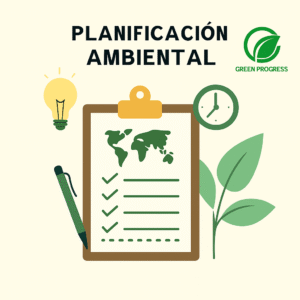What is Carbon Footprint? Definition and Meaning
A carbon footprint refers to the total amount of greenhouse gases (GHGs) primarily carbon dioxide (CO₂), methane (CH₄), and nitrous oxide (N₂O) released into the atmosphere as a result of human activities. It is typically measured in tons of CO₂-equivalent per year, allowing us to understand the environmental impact of our daily choices, from the food we eat to the energy we consume.
In simpler terms, your carbon footprint is the sum of all emissions linked to your lifestyle. This includes direct emissions, such as driving a gasoline-powered car, and indirect emissions, such as the carbon released during the production and transportation of the goods you buy.
A larger carbon footprint accelerates global warming, contributing to rising temperatures, extreme weather events, biodiversity loss, and climate change. On the other hand, minimizing it supports sustainability and helps build a greener future.
How is Carbon Footprint Calculated?
Calculating a carbon footprint requires analyzing multiple sources of emissions. Organizations and individuals can use a carbon footprint calculator to estimate their impact.
Key factors considered in calculations include:
- Transportation: emissions from cars, buses, trains, and flights.
- Home energy use: electricity, heating, and cooling consumption.
- Dietary habits: meat-heavy diets generate higher emissions due to livestock farming.
- Consumer goods: clothing, electronics, and packaging often involve significant carbon in manufacturing.
- Waste management: how you dispose of waste and whether materials are recycled.
Advanced tools consider scope emissions (Scope 1, 2, and 3), widely used in corporate sustainability:
- Scope 1: direct emissions from owned resources.
- Scope 2: indirect emissions from purchased energy.
- Scope 3: all other indirect emissions, such as supply chains, employee commuting, and product lifecycle.
Main Sources of Carbon Footprint: Individual and Corporate
Carbon footprints differ based on context, but the main categories are:
Individual Carbon Footprint
- Travel and commuting (cars, flights, buses)
- Household energy (heating, cooling, electricity usage)
- Food and diet (meat vs. plant-based choices)
- Consumption habits (electronics, clothing, single-use plastics)
Corporate Carbon Footprint
- Supply chain operations
- Energy-intensive industries (manufacturing, mining, construction)
- Transportation and logistics
- Employee activities (travel, commuting, facilities usage)
Businesses face growing pressure to reduce carbon emissions and adopt net-zero strategies, often publishing annual sustainability reports to track progress.
Impact of Carbon Footprint on Climate Change
The carbon footprint directly contributes to the greenhouse effect, trapping heat and leading to:
- Rising global temperatures
- Melting glaciers and rising sea levels
- Ocean acidification
- More frequent extreme weather (hurricanes, droughts, wildfires)
- Threats to biodiversity and ecosystems
The Intergovernmental Panel on Climate Change (IPCC) warns that reducing carbon footprints worldwide is essential to keep global warming below 1.5°C. Failure to act will have devastating consequences for human health, food security, and global stability.
Carbon Footprint Around the World: Key Statistics
- The average global carbon footprint per person is about 4 tons of CO₂ per year.
- In the United States, the average is 16 tons per person, one of the highest globally.
- In contrast, many developing nations average 1–2 tons per person.
- Corporate supply chains often account for 70% of total business emissions.
- Agriculture contributes nearly 25% of global GHG emissions, primarily due to livestock and deforestation.
These figures highlight the importance of both individual responsibility and systemic change at governmental and corporate levels.
How to Reduce Your Carbon Footprint: Practical Strategies
Transportation
- Use public transit, biking, or walking instead of driving alone.
- Switch to electric or hybrid vehicles.
- Minimize air travel; opt for trains or virtual meetings.
- Carpool to reduce emissions per passenger.
Energy Use at Home
- Install solar panels or use renewable energy suppliers.
- Improve insulation and switch to LED lighting.
- Use energy-efficient appliances.
- Reduce unnecessary heating and cooling.
Food and Diet Choices
- Adopt a plant-based diet or reduce meat consumption.
- Support local and seasonal produce to minimize transport emissions.
- Reduce food waste through better planning and storage.
Consumption and Waste
- Buy quality, durable goods instead of fast fashion or disposable items.
- Practice recycling and composting.
- Embrace the circular economy, reusing and repairing products.
Carbon Offsetting: Is It Really Effective?
Carbon offsetting involves compensating for your emissions by funding projects that remove or reduce CO₂, such as reforestation, renewable energy projects, or methane capture initiatives.
While offsetting is a valuable tool, experts warn it should not replace direct emissions reduction. True sustainability requires prioritizing prevention and reduction, with offsetting as a complementary solution.
The Future of Sustainability and Carbon Footprint Reduction
Looking ahead, reducing carbon footprints will require:
- Global policy action: stricter climate agreements and carbon taxes.
- Technological innovation: carbon capture and storage, green hydrogen, and advanced renewables.
- Corporate responsibility: transparent reporting and sustainable supply chains.
- Cultural change: individuals embracing eco-friendly lifestyles.
If society collectively reduces emissions, we can align with the Paris Agreement targets and mitigate climate risks.
The carbon footprint is more than just a metric — it is a reflection of how human activities impact the Earth. From individuals making lifestyle changes to corporations transforming supply chains, every effort counts.
By reducing, rethinking, and compensating emissions, we can build a sustainable future where economic growth coexists with environmental preservation. The challenge is urgent, but the solutions are within reach if we act now.









